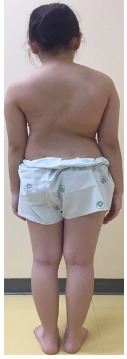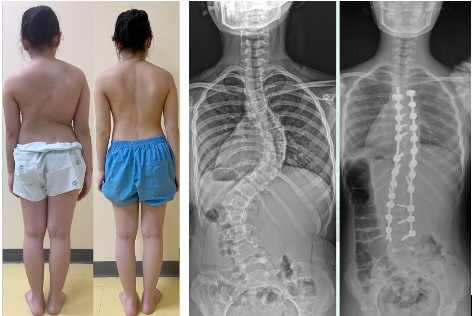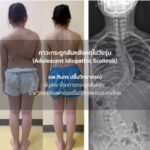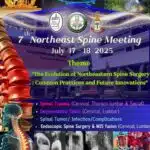Adolescent scoliosis
(Adolescent Idiopathic Scoliosis)
Dr. Tinkorn Pleumwittayaporn
Spine Surgery Unit, Orthopedics Institute, Lerdsin Hospital
Adolescent scoliosis is a condition in which the spine is curved more than 10 degrees. It occurs in the population aged 10-18 years, with the highest incidence between 13 and 15 years. It is considered the most common spinal abnormality in adolescents, with an incidence or prevalence of this condition of 0.47-5.2. % It is more common in females than males at a ratio of 4:1 to 10:1 and tends to increase with increasing age. 1,2 If this condition is not treated properly, it may result in various problems, such as problems with the muscular or respiratory systems, as well as subsequent disability.
cause
80% of adolescent scoliosis is idiopathic. Only 20% are caused or result from certain diseases, such as genetics or neuromuscular disorders.2
Signs and symptoms
In this condition, patients often have no symptoms. Most parents bring patients to see a doctor because they notice that the patient has unequal shoulders or hips, and may also find that one shoulder blade is abnormally protruding. Only a few people will find that they have other symptoms, such as chronic back pain without a known cause.

Figure 1 shows. Adolescent scoliosis is characterized by the right shoulder being higher than the left and the hips being uneven.
Radiological diagnosis
Normally, in all patients with suspected scoliosis, the doctor will refer for a diagnostic examination by radiology (posteroanterior and lateral 36- x14-inch long cassette views) with the purpose of confirming the diagnosis, as well as monitoring the trend of the spine curvature from observational treatment, including helping to consider the approach and plan the treatment for that patient correctly and appropriately.

Figure 3 shows. Comparison of anatomical characteristics and diagnostic radiographs before and after scoliosis surgery.
Reference documents
1. Konieczny MR, Senyurt H, Krauspe R. Epidermiology of adolescent idiopathic scoliosis. J Child Orthop 2013; 7:3-9
2. Silva FE, Lheman Jr RA, Lenke LG. Chapter 23: Idiopathic Scoliosis. In: Herkowitz HN, Garfin SR, Eismont FJ, Bell GR, Balderston RA. Rothman-Simone The Spine 6th Edition. Philadelphia, PA: Elsevier Saunders; 2011. P. 385-401







